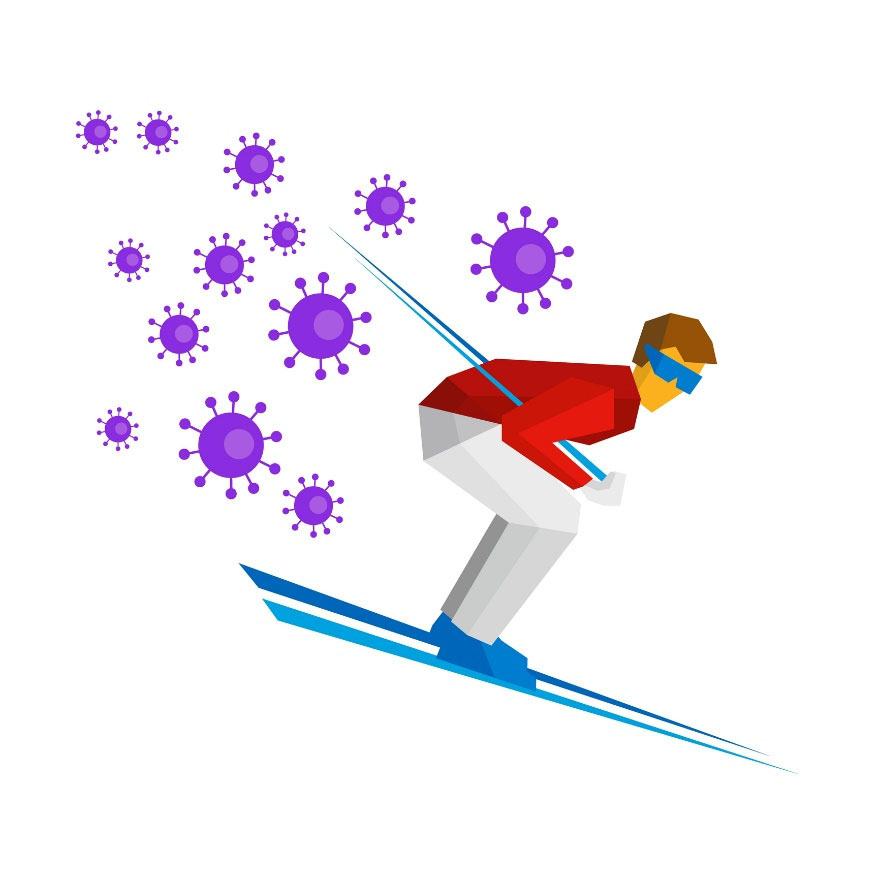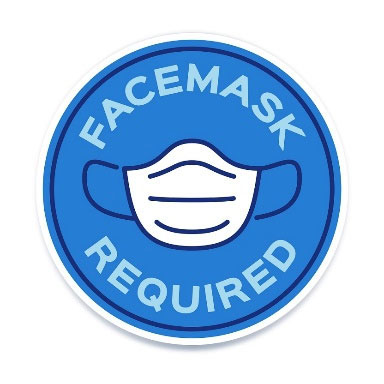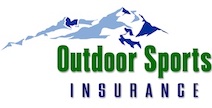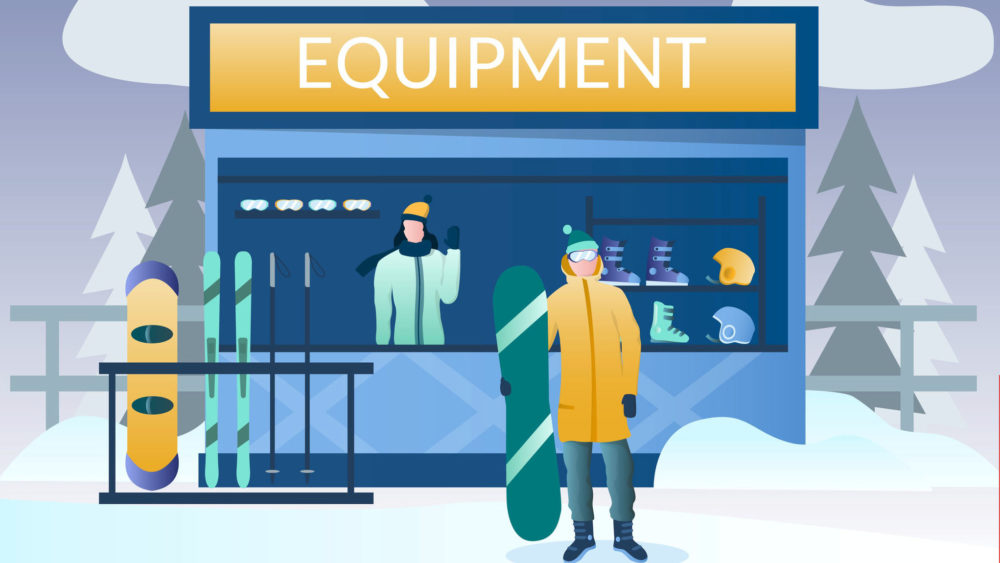Covid-19 & Winter Retail Operations
The following post is a collection of suggestions/ideas for best practices to implement in‐store for retail operations in the time of COVID‐19. We understand that a, “one size fits all” approach is not feasible for every shop in our program. We, therefore, took the approach of sourcing these ideas at the regulatory level, the industry level, and the store level in which we engaged shops of varying sizes and geographies to offer their insights for how they are modifying the day‐to‐day operating procedures in order to ensure the safety and health of employees and customers alike.
The post is broken out into the following sections:
- Employee Management
- PPE, Sanitization & Documentation
- Equipment Fitting
- Rental Process & Release Form
The key takeaways from this post are as follows
- Stay current with local, state, and federal guidelines as new information emerges and the standards for compliance evolve.
- DOCUMENTATION IS KEY – As of right now, the potential for 3rd party lawsuits alleging COVID spread is yet to be determined. Until an official position is established as to whether lawsuits of this nature are permissible, the best line of defense a retail operation can take is proper execution and documentation of in‐store health and safety protocol.
- Monitor health/symptoms of employees.
- Limit/Restrict customer interface as much as possible.
- Utilize online tools/resources where possible.
- Vigilant use of Personal Protection Equipment (PPE)
Employee Management
Segmentation
- Segment employees according to shifts:
- Have the same group of employees working the same shifts (times of day/days of
week). This way, if one employee contracts the virus, the need only enforce quarantine among the shift group of that employee rather than shutting down operations altogether.
- Have the same group of employees working the same shifts (times of day/days of
- Segment employees according to roles and limiting employee functions to those roles exclusively (where possible) to avoid “cross pollination”/in‐store touch as much as possible.
- Establish “work stations” within the store, and identify all points of potential infection per work station (ie, all surfaces) Ex:
- Point of Sale Station o Retail Floor

- Rental/Tech Station o Changing Rooms
- Restrooms
- Breakrooms
- Entrance/Exterior
- Point of Sale Station o Retail Floor
- Assign employees to each workstation (avoid “cross‐pollination” where possible, ie, employees assigned to POS station, manage/sanitize that station only.) Examples of roles:
- Greeter
- Boot Station
- Tech Station
- Equipment delivery/retrieval
- Point of Sale/Cashier Station
Monitoring
- Require employees to take their temperature and record it in store log prior to every shift.
- Require employees to get tested for COVID on a regular basis. Document test results in store log.
- Establish protocol to track, report, and escalate instances of employee illness.
PPE, Sanitization & Documentation
PPE
- Items to have in‐store at all times:

- Disposable Masks
- Disposable gloves
- Hand Sanitizer
- Disinfecting surface cleaner
- Disinfecting equipment cleaner
- Disinfecting electronics cleaner
- Paper Towels
- Thermometers at the front and back of shop for staff to check temperature on entering the shop (this is a requirement of all staff)
- Additional ideas for in‐store equipment that facilitate separation and restrict cross‐contamination:
- Acrylic barriers at cashier station.
- Plastic Bins/Poly Bulk Trucks for inventory separation/rental returns.
- Face shields and protective eyewear.
Sanitization & Documentation
- Establish schedule for employees to sanitize their respective work stations (Ex: POS, changing rooms, tech space, retail floor, restrooms, etc)
- Use checklists to:
- Track all surfaces that represent points of infection. (Ex: counters, benches, equipment, merchandise, etc)
- Ensure compliance with protocol for opening, closing, and in‐store operation/work station management.
- Use logs to:
- Document execution of sanitizing schedule/protocol.
- Track inventory of Personal Protection Equipment (PPE)
- Track employee attendance/shifts, temperatures, COVID test results
Equipment Fitting
- Limit in‐store capacity as much as possible.
- Implement a scheduling system to encourage customers to visit the store at a designated time to be fitted for equipment.
- Utilize online capabilities as much as possible. Ex:
- Update website to include an online schedule for customers to book appointments and an intake form to collect necessary customer information in order to reduce time spent in‐store.
- Update website to showcase available equipment and encourage customers to pre-select equipment of interest prior to coming into the store.
- Establish customer queuing section and place floor markers to indicate where customers should stand while queuing in order to ensure social distancing. (Space permitting)
- Establish fitting section and mark spaces for customers to sit at an appropriate distance while trying on equipment. (Space permitting)
- Assign employees to work with specific customers throughout fitting process. Gloves and masks to be worn at all times.
- Encourage employees to demonstrate how to put on/use equipment, rather than touch customers throughout the process. Ex: Provide customers with verbal instructions on how to get into, and buckle boots. Describe the correct fit and feel to the customer. If the customer requires assistance, do so with minimal touching.
- Separate equipment/merchandise that has been touched by customers and sanitize immediately following last touch. Ex:
- Boots: If a boot doesn’t fit a customer, the boot fitter sprays the inside of the boot with sanitizing spray and wipes it down with a sanitizing wipe before putting it back on the shelf and pulling another boot to try on the customer.
- Helmets: Spray outside/inside/strap of helmets after each customer tries it on.
- Socks: Separate socks that have been used to try on boots and wash in laundry after each, individual use.
- Apparel that a customer has tried on should be set aside for a minimum of 24 hrs before going back on the rack.
- Sanitize all surfaces/changing rooms a customer has touched/sat upon immediately after fitting is completed.
Rental Process & Release Forms
Rental Process
- Incorporate contactless rentals
- Collect necessary information through website intake forms/online rental tickets prior to customers coming in‐store.
- Encourage customers to book a specific time to pick up/return equipment.
- Implement curbside delivery/returns where possible — If curbside delivery is possible, make sure to secure customer signatures on rental release forms once the customer has viewed/agreed upon the equipment settings.
- Utilize outdoor rental return stations where customers can leave equipment without having to enter the store.
- Online booking capabilities allow you to collect the information you need from your customer without face‐to‐face contact, and limits time spent in‐store.
- Establish designated rental section in store where possible and place floor markers to indicate where customers should stand to ensure social distancing.
- Separate and sanitize all equipment prior to putting back into circulation for future rentals.
- Encourage longer, multi‐day rental periods
- Collect payment in advance of equipment pick up.
Release Forms
- The following language is provided to you to add to your release forms in order to address release of liability from exposure to COVID‐19:
- “user assumes the risk of actual or alleged transmission of a communicable disease such as COVID‐19”.
- **NOTE: In order for this language to be effective, it must be included with the section of the form that details examples of perils the customer faces while participating in the recreational services you offer. Ex:
- BEFORE: I understand that the sports of skiing, snowboarding, skiboarding, snowshoeing and other sports (collectively “RECREATIONAL SNOW SPORTS”) involve inherent and other risks of INJURY and DEATH. I voluntarily agree to expressly assume all risks of injury or death that may result from these RECREATIONAL SNOWSPORTS, or which relate in any way to the use of this equipment.
- AFTER: I understand that the sports of skiing, snowboarding, skiboarding, snowshoeing and other sports (collectively “RECREATIONAL SNOW SPORTS”) involve inherent and other risks of INJURY and DEATH. I voluntarily agree to expressly assume all risks of injury or death that may result from these RECREATIONAL SNOWSPORTS, or which relate in any way to the use of this equipment. User also assumes the risk of actual or alleged transmission of a communicable disease such as COVID‐19.

